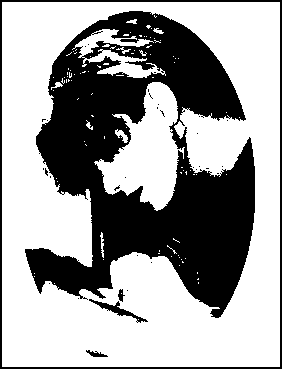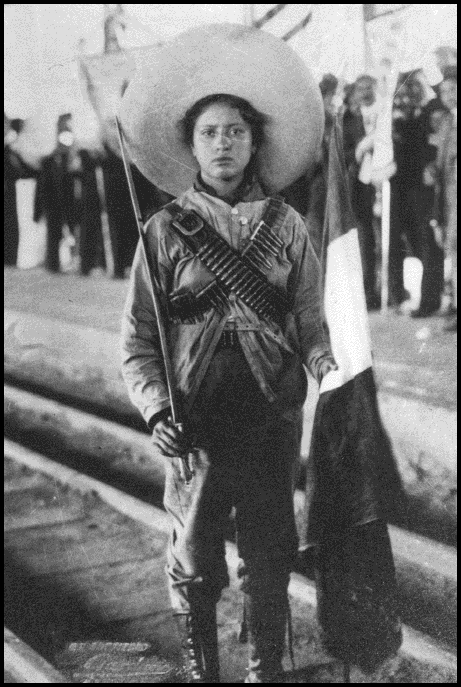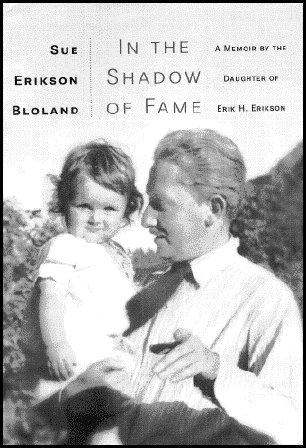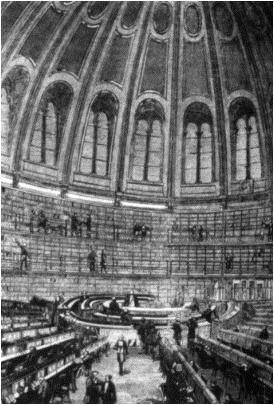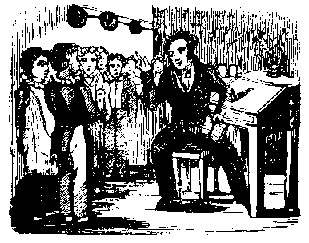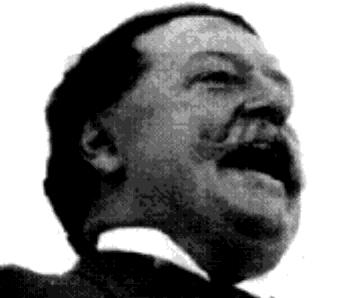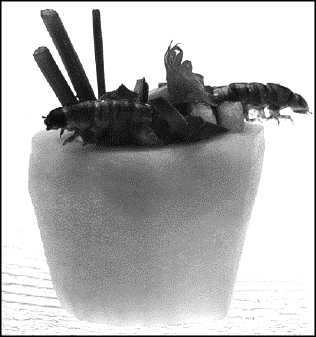THREE
HITS
Moon
Susan Straight
(Houghton Mifflin)

For their lives can be terrible and remorseless and soul-destroying, but there are also moments --- at least in the lives of the people I know who live in that world --- of joy and life and fiesta and music and poetry.
If Straight wants to see that world as nasty, drug-infested, and brutish --- that is her choice. If she wants to stick in a set of improbable deus ex machinas (the shy Serafina trying to drive a car; two cops ignoring her heartfelt gestures towards her baby; Larry the bum somehow finding his daughter; Oaxacan Granny somehow finding Serafina in Tijuana --- pop. 2,000,000) that, too, is her choice. But if she wants to put it between covers and call it art, we have to demur.
In our readings we have the right to expect a mix of sorrow and wonder, of tragedy and delight, of horror and ecstasy. It's called life. To see our journeys as unremitting horror, speckled with some of the most improbable happenings this side of Disneyland, is not only distorting, it makes the discerning reader feel --- as Jerome K. Jerome would have it --- too much put upon.
review
the store to buy breakfast and the paper, on a
stiff knee. It lets you choose the way you have
your eggs, your coffee. Then it sits a fisherman
down beside you at the counter who says, Last night,
the channel was full of starfish. And you wonder,
is this a message, finally, or just another day?
poem
Photographs from the
J. Paul Getty Museum
Anne M. Lyden
(J. Paul Getty Museum)

Less than a third of the 186 black-and-whites Strands owned by the Getty are shown in this book, and we have chosen three of them for viewing here because they are, as the juveniles would say, awesome.
review
Of World War I
A Political, Social,
and Military History
Spencer C. Tucker
Editor
(ABC-Clio)
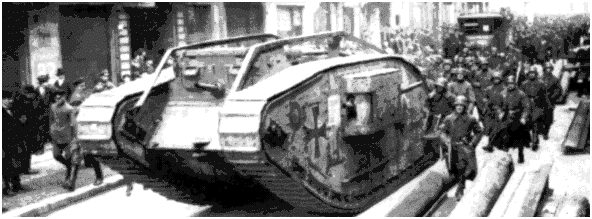
The maps tell much of the story. At the "Ypres Salient," a dotted line represents 11 November 1914. A solid line represents 30 April 1918. The maximum distance between the two is perhaps nine miles. Three-and-a-half years, nine miles. In between, the once prosperous towns of Messinens, Passenchendaele, and Armentières. Besides "Mademoiselle from Armentières, Parlez-vous," the three battles of Ypres produced mud, wasted shells, ruins, holes filled with foul, muddied water, gas, and 1,100,000 casualties.The subject "gas" does not have an entry in this Encyclopedia, there between the French aviator Roland Garros, and Gaza, first Battle of (26 - 27 March 1917). Gas did appear in the salient, where the markets and animals and people, the simple country life of a farm folk, ceased to exist as the several battles of Ypres --- called by the English "Wipers" --- rolled through. The First one began on 15 October 1914. It was the fourth official WWI battle, after Arras and Albert and Aisne, as if they wanted to test the first and last letters of the alphabet.
According to the Encyclopedia, Aisne was the battle in which the first trenches were laid out, which are featured here in Volume IV, between "Trench Fever," "Trench Foot," and "Trenchard, Hugh Montague, 1st Viscount, (1873 - 1956)," a Royal Air Force marshal.
Trenches were conjoined foxholes, first for protection against the machine guns and shrapnel and rifle fire, later to evolve into rustic, if not water-logged living rooms, bedrooms, card rooms, smoking rooms, bathrooms, kitchens, hideouts, and dying room for the millions who lived, ate, slept, wrote letters home ... millions who presumably loved and wept and definitely died to save the world from the designated enemies.
Go to the complete
reviewSkin Deep
Tattoos, the Disappearing West,
Very Bad Men, and My Deep
Love for them All
Karol Griffin
(Harcourt)The one that owns her, we learn, is tattoos and tattooing. There are whole long, involuted, poetical passages in which the magic of it gets communicated to the reader, with a breathlessness that is more than compelling.She paints a portrait for us of her with the tattoo machine, doing her first tattoo, on the leg of her newest love, Rick:
Then the thrill set in, a combination of fear and uncertainty and adrenaline mingled with glee and uncontrollable excitement. The thrill coursed through me like electricity, and the pulse of my own blood pounded in my throat. I looked down at the tattoo machine I was holding, and my hand felt like it belonged to someone else, cold and distant.
"Before long, I was lost in the sensation, and the vibrations from the machine sang along the nerves of my hand and flickered up the insides of my wrists," she concludes. The sensuality of it: we become part of her skin, our pores infused with the ink, the smell of the shop, the blood, the vaseline used to soften and hold the image.
§ § § Skin Deep is an autobiography, yes: but it is also a textbook --- a very funny textbook --- about those who go into the tattoo business, or who come in to get tattooed, and the art of tattooing itself. We get to meet all the characters who come into Ms. Griffin's parlor in Laramie.
Go to the complete
reviewAching for
Beauty
Footbinding in China
Wang Ping
(University of Minnesota)What the mothers would do is this: when the daughter was still young, they would take a cloth and twist it around her child's feet until they were bent down and the toes began to curl up and backwards towards the heel. It would be an excruciatingly painful experience (sometimes it would last for several years; the cloth would be tightened every week or so). The mother would never relent, for she knew that it was the secret to her daughter's, perhaps the whole family's, security and hope for the future.
Now you and I know that a woman's foot, which had been twisted and scarred by the binding, would not be something you and I would find especially sexy. But for the men of China, for almost a thousand years, there was something precious about this, the lowest part of the body, shrunk down to two or three inches, done so in such a way that it was useless for walking, for moving about. Feet that were twisted and torn, exuding their own peculiar smell, and the men were struck with passion. They called it the "golden lotus," in honor of the flower before it bloomed.
The feet were carefully hidden, so that when men were finally allowed to see it, to touch it, to kiss it, to caress it, to suck nuts from between the twisted toes (often the whole dipped in tea) --- they would go bananas.
This is how Wang describes what she calls "the duality" of it:
It shines with beautiful embroidery and irresistible charm on the surface, yet underneath there is only deformity and foul odor. It makes a woman appear celestial and high-bred; when bared, the feet resemble a pair of hooves. Adorned with shoes, bound feet invoke art and magic; under the bandages, however, is the trace of violence. Outside, a bound foot is erect and pointed like a penis; inside, it is creased and curved like a vagina. A pair of bound feet are sacred and dirty, a taboo and an object of desire. Footbinding contaminates and cleanses, curses and heals, masks and displays, seduces and kills. The list can go in indefinitely.
Go to the complete
reviewLas Soldaderas
Women of the Mexican Revolution
Elena Poniatowska
David Dorado Romo,
Translator
(Cinco Punto Press)If you were a woman, and wanted to help the Revolution, it was best to be with Zapata. The soldiers were always "caballeros." Josefina Bórquez relates how she and four Carrancista friends were detained in Guerrero. When the general arrived in Chilpancingo, Zapata personally delivered them to him. He told his men,Stay behind. Nobody goes with me. I want to show the Carrancistas that I fight for the Revolution, not to take possession of their women.
When a sentry asked, "Who goes there?" he responded,
"Zapata."
"You're Emiliano Zapata."
"I am.""Well, I find it strange that you come without protection."He said of the women, "No one has touched them; I bring them back to you exactly as we found them."Go to the complete
reviewCider Hard
And Sweet
History, Traditions,
And Making Your Own
Ben Watson
(Countryman Press)What I needed was Ben Watson's wonderful book, this A to Z of making cider. For here he explains all: the difference between raw and pasteurized cider, the equipment needed --- carboys, fermentation vessels and locks, hydrometers, racking and bottling equipment --- and the additives that can be used (powdered grape tannin, ammonium sulfate, thiamine, sulfur dioxide yeasts).There is a full list of terms (did you know that a cider with a lactic-acid bacteria disorder has a flavor that's known as "mousy?") There are descriptions of the different types of cider, including "New England-Style" (fortified with sugar), "Cyser" (made with honey), "Farmhouse cider" (still and dry), "Sparkling" (refermented in a large vat), or "Dropped" (cider made with mouse droppings.) I just made up this last one.
Then there is a list of stores or web-sites for equipment, mail-order places for hard cider, and associations: The Home Orchard Society, Seed Savers Exchange, and The Campaign for Real Ale, which is an English organization that lists pubs where real cider and perry are available (perry is cider made by a guy named Perry P. Perry --- I mean, it's cider made from pears). There are even directions for cooking with cider, including one that I'm going to make right now, if you will excuse me: "Pork Chops Braised in Hard Cider." Yum.
Go to the complete
reviewThe First
Be-In --- 1952
John Cage and the
Untitled Event
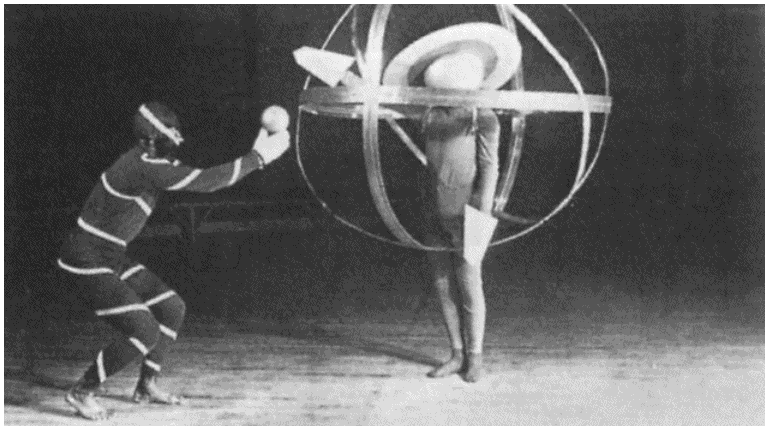
John Cage's The Ruse of Medusa performance was still, in spite of its departure from the Bauhaus model, the production of a scripted play. It was on his visit [to Black Mountain College] in 1952 that he radically disrupted previous incarnations of performance and inaugurated a dispersal of attention and a radical fragmentation of narrative. By the time Cage returned, he was utilizing pseudo-chance compositional methods derived from parameters provided by the I-Ching. But it was faculty member M.C. Richards' translation of Antonin Artaud's The Theatre and Its Double, with its call for a medium of theatrical performance beyond the scriptures of literature, that provided most fertile ground for the 1952 'Event.'Cage and pianist David Tudor formulated an idea for a performance with multiple participants who would perform during various overlapping time segments totaling forty-five minutes. According to Cage, he proposed that Charles Olson and M.C. Richards read their poetry, student Robert Rauschenberg display his paintings and play records, and Merce Cunningham dance. Tudor was to perform on the piano, and Cage would read from a previously prepared lecture on Zen Buddhism. To Cage, the event represented the fairly specious possibility of events taking place without being causally related to one another, although he had in fact established strict time brackets and organized the event with particular temporal and location parameters.
Go to the complete
readingLusitania
An Epic Tragedy
Diana Preston
(Walker)She was a gorgon of a ship, 785 feet long, with a beam of 85 feet, four boiler rooms, four propellers, designed for 2200 passengers and a crew of 850. The Lusitania could go twenty-five knots, and after it was launched in 1906, it was the fastest passenger vessel afloat, being able to cross the Atlantic in just under five days. She burned 1,000 tons of coal a day, and had four smokestacks, one of which was fake: the more funnels, it was thought, the faster the ship.She was built by the Cunard Company, who had been transporting people across the Atlantic since 1840. She was underwritten by the English government, a product of the need to compete with France, Germany and the United States for domination of the seas. She was named by a Professor G. G. Ramsay who recalled the "evocative names of such ships as the Umbria, Etruria, Campania, and Lucania." Cunard named the Lusitania after Roman Portugal.
The disaster occurred in 1915, as a result of being hit directly mid-ship by a torpedo fired by a German U-Boat (officially the U-20). The Lusitania sank in eighteen minutes. Of the 1,959 passengers and crew, 1,198 died of injury, drowning or exposure, including 49 children. As the author notes dryly,
Compared with daily casualty figures at the Front, the Lusitania fatalities were tiny. But world reaction to what had occurred off the Irish coast Friday 7 May 1915 was enormous.
Go to the complete
reviewIn the Shadow of Fame
A Memoir by the Daughter
of Erik H. Erikson
Sue Erikson Bloland
VikingBloland doesn't seem too impressed by her impressive father. Indeed, she dwells inordinately on the distance, the outbursts of temper, his apparent favoritism towards her older brothers. The god of the newest 1950s theories of family dynamics was, she is telling us, a lousy family man.Big deal. As my friend Tom Connors used to say, another person with a monkey on her back. Her gloomy style, and her passion for repeating herself does nothing to set the reader on fire. How many times do we have to hear of Erikson's fixation on the fact that his missing father might have been of the Danish nobility?
It all turns into a bummer, especially for those of us who don't give a toot about the eccentricities of artists. Do you and I care that Norman Mailer beat up on his lovers, Gauguin died of syphilis, Hart Crane liked taking on sailors (and getting beat up by them), that Edna St. Vincent Millay was named after a hospital? The only perfect saint died 2500 years ago, and civilization isn't in any hurry to reproduce another.
Go to the complete
reviewFrogs' Legs and
BB Guns
Childhood
In America,
1945Alfred's father had given him a BB gun, perhaps to annoy Adelaide, and we went looking for things to shoot, crows mostly, though we did manage to score several large frogs around the spring. I had heard that the French ate frogs' legs, and somehow we prevailed on Adelaide to cook them up for us. They were all right but unexciting; the French version owes much to garlic, unknown in those days to white-bread Americans. Then there was something about moles, or possibly mice, that memory has mercifully smudged. This was my project, and I was going to make something, a little purse for coins, with satiny soft furs sewn together. Did I trap and kill moles? Or use mice from the kitchen mousetraps? I must have skinned them myself, and then tried to cure the skins, and I suppose they stank and I was persuaded to bury them. Forgotten, and just as well.One year we collected the roots of young sassafras trees and talked Adelaide into making root beer. It smelled lovely, and was put up in mason jars on a shelf in the kitchen, and exploded. The jars blew up one by one at long intervals, usually in the quiet of the evening when we sat at the table reading, and we all jumped, and Adelaide would go for the mop. One year we concentrated on archery, with bows and arrows we whittled by hand, and practiced. We stood sideways to the target and squinted our eyes like professionals, and even I got fairly good, considering how crooked our arrows were.Go to the complete
readingIn the
South Bronx
Of America
Mel Rosenthal
(Curbstone Press)Mel Rosenthal grew up in what was once called the East Bronx. His memories of it are of a lively and vital community. He left to study, and do international charity work, but he always returned to take photographs of the area he had lived in. Later, he participated in the South Bronx Portrait Project.It had originally begun with photographs of Vietnamese refugees and then graduated with pictures of the destruction of what had once been a stable community of apartments, homes, churches, schools, factories and stores. He began to show the citizens living in the midst of this wreckage, and became known in the area as "the picture man." He dedicated himself to showing people surviving in what he now thinks of as another Third World country (in fact, some of the denizens had asked that Russia post a diplomat there, so they could ask for foreign aid).
In the South Bronx of America consists of over a hundred black-
and- white photographs of people working to survive in the rubble of what is essentially a dust-bin, with commentary by the author and pertinent quotes from others who lived there, still live there, or are familiar with the area. Go to the complete
reviewKarl Marx
Francis Wheen
(Norton)We always heard that Marx was a humorless drudge, the equivalent of a computer geek, slaving away in the British Museum Reading Room. Nonsense. He was a merry one, or at least as merry as one could be --- having been born in dreary Trier, Germany.He was a dynamite speaker, especially when there was a brouhaha amongst his fellow rabble-rousers, as there usually was. He could round up the troops, get anything he wanted passed when he was running, say, the International Working Men's Association.And he was wonderful at insults. Arnold Ruge, he said,
stands in the German revolution like the notices seen at the corner of certain streets: "It is permitted to pass water here."
Rudolf Schramm:
A rowdy, loudmouthed and extremely confused little mannequin whose life-motto came from Rameau's Nephew --- I would rather be an impudent windbag than nothing at all.
After he started Das Kapital, he was forever and a day promising to deliver the manuscript to the publishers, forever and a day putting it off. He had bad liver, pains here and there, and boils so terrible that he often couldn't sit to work. These carbuncles gave a colorful edge to his work. When he delivered Das Kapital to his German publishing house, the manuscript had blood all over it. Engels had to lacerate one of his more pernicious boils, sited on his...well, don't ask; I won't tell.He and Frederick Engels were a pair. They used to go pub-hopping along Tottenham Court Road. There were eighteen pubs, and they vowed to visit each and every one. By the time they got to the last, they were drunk enough that they began to throw cobblestones at streetlights --- until the police came running. To avoid being caught, they ducked down alleys and jumped over fences like a couple of rowdy schoolboys. O these kids!
Go to the complete
reviewA Brief Review:
The 9th Amendment of
the U. S. Constitution
Robin HarrisThe Bill of Rights is a radical document, so radical that most conservatives (and not a few liberals) probably wouldn't support it even today. Those working to deny our rights would just as soon we didn't know what it says. More than 200 years ago people believed so strongly in these ideas that they put their "lives, fortunes and sacred honor" on the line for them. And every generation since has been asked to do the same, whether in foreign or domestic battle.§ § § Popular culture continues to wrangle over some of the amendments; these are the better known. But there are others, more obscure.
For instance, the Third Amendment's rules about the quartering of soldiers are so uncontroversial that even Scalia hasn't found fault with them. The Tenth is too abstract: what are these unnamed powers not given the United States and reserved to the States?
Go to the complete
articleGoing BatsMy real change of heart must be attributed to the sheer delight of coming face to face with a cast of unforgettable creatures. We captured charming Honduran white bats with clown-like yellow ears and leaf noses that, within minutes, lay tamed in our hands, chewing contentedly on pieces of banana. I fed sugar water from an eyedropper to docile, long-tongued, nectar-feeding bats, the hummingbirds of the night. And then there were close encounters with the carnivores, such as the crafty fringe-lipped bats that tuned into the calls of amorous male frogs and snatched them midperformance. But to me the most elegant were the variety of fruit-eating bats, many with bold white stripes down their backs and on their faces.Frank's discourses on the ecology of bats were delivered through formal lectures often spiced with humorous natural history anecdotes. He regaled us with descriptions of the marvelous New World bats we would meet if we followed in his footsteps, such as the industrious tent-making bats. The I. M. Pels of the bat world, these bats create their own shelters under a Heliconia leaf or banana frond by cutting the mid-rib veins and allowing the halves to collapse into a bivouac within which a family could roost safely out of sight. We might also befriend the bulldog bats that scoop fish out of the water like an eagle; the carnivorous false-vampire, the largest New World bat, which snatches birds and small mammals while they sleep on tree limbs; the delicate sac-winged bats, among the smallest species, weighing less than a nickel but with a social system identical to that of African lions --- the dominant male closely guarding his harem of breeding females from jealous competitors.
Go to the complete
readingMs. Moffett's
First Year
Becoming a Teacher
In America
Abby Goodnough
(Public Affairs/Perseus)Ms. Moffett's First Year is a wonky report on a silly experiment to rescue the New York's public schools from the state legislature, the teacher's union, and the school bureaucracy. All agree that changes --- deep changes --- are necessary. Students may already be starting the process of burning down the school buildings (excellent sentiment), but, unfortunately, many of the old ones --- both buildings and administrators --- are still around.The state and local authorities are busy dumping even more money --- your money, my money --- into that proven blowhole of a decaying institution instead of passing a few laws that would allow the teachers to beat the shit out of recalcitrant, noisy, and out-of-control students.
Perhaps the school system could invest in a few dozen new rulers: When I was a student in the Bronx, fifty years ago, a swift swat across the knuckles was all that was needed to keep us interested in the proceedings. Our Ms. Daugherty was not at all interested in back talk, and she certainly wasn't stupid enough to try to plead with us to behave. She also didn't have to put up with the likes of a prison-guard clone vice-principal looking over her shoulder because she didn't need one.
She could handle us just fine: A whack or two was all that was required to keep us on course. In the principal's office downstairs, the back up, a wooden paddle called a "fanny-warmer" was always available in times of dire emergency .
Too bad that Goodnough isn't a good enough of a visionary to suggest this most appropriate solution. It's so simple, and being simple, everyone overlooks it.
Go to the complete
reviewPepys' Diary
Samuel Pepys
Kenneth Branagh,
Reader
(HighBridge Classics)I know now why they tried to get us to read Pepys' Diaries in university. He is a classic upwardly-mobile bureaucrat (his title was "Surveyor-General of the Royal Navy") --- a man who was a mover and doer; also he was one of a class of men, not unlike his contemporary Casanova, who barely survived a pesky if not exuberant libido.His follies are memorable. Pepys had several affairs with respectable lady friends. At times, he was caught by his jealous wife; at other times, he worked around (if not under) her. His specialty outside provisioning naval warships was hunting down innocent housemaids; all peccadilloes were noted in his special code within the general code of the diary (the whole was written in something called "lachgraphy;" it was deciphered and published in bowdlerized form in 1825).
Pepys' love affairs were rendered into a strange mix of English, French and Spanish. His name was pronounced "Peeps" but, in keeping with his ubiquitous lusts, it is appropriate to find that some of his cousins pronounced the name with two syllables.
§ § § He is constantly counting his gold (being part of the navy procurement service is, it seems, very profitable), and each of his end-of-the-year entries tells us of the gain to his net worth. He starts the diary with £20 in the till, and in the last, he is worth more than six thousand.
Where does it all come from? Well, he casually takes kick-backs on contracts. Very wary he is, too: In one case, he refuses to open the envelope containing his bribe until he gets home, in case he might be seen. He also advances ranking officers to better assignment in the Navy so he can be near their wives, being rewarded by sleeping with the eponymous Mrs. Bagwell, along with a Mrs. Lane ... both of whose husbands are known to him and, presumably, improved in their state if not approving of the liaison.
Go to the complete
reviewThe Collected Works of
William Howard Taft
Volume I
David H. Burton,
A. E. Cambell, Editors
(Ohio)Ohio University Press plans to put out eight volumes of The Collected Works of William Howard Taft, a project whose bulk may only be matched by that of its progenitor. Taft was a big feller --- big as all outdoors --- but he was no pantywaist in the brain department, as proved by the contents of this volume.Volume I consists of nineteen speeches given between 1895 and 1908, ranging from subjects as abstruse as Writs of Injunction and a close study of the 13th, 14th, and 15th Amendments to the Constitution, to broad public issues such as Self-Rule for the Philippines, the rights of unions to strike, and abuses by large corporations and railroads.
In all these, Taft proves himself to be articulate, wordy, serious, even --- dare we say it? --- a man of heavy thoughts. He was one of those smart cookies who today we would relegate to teaching torts at some state university. Certainly, in the age of Weight-
Watchers, a Big Daddy like Taft could never hope to make it much beyond a municipal water district in the election sweepstakes. Which is more the pity. These speeches were given before Taft was elected President in 1908. A hundred years later, we can only envy a time when we could have a would-be president who could speak, knowingly, on, say, Roman (Civil) Law vs. Anglo-Saxon (Common) Law.
Go to the complete
reviewBugs,
Bites, and
Bowels
Dr. Jane Wilson-Howarth
(Cadigan Guides)I imagined that Bugs, Bites and Bowels would probably scare me away from ever leaving my hearth and home again. But no: all those awful things that we fear when we are abroad are there, but they pale in comparison to the real problems that you will have with not-so-strange dangers in other lands. Dr. Wilson-
Howarth says that you might well be fearful of tarantulas, coral snakes, Delhi Belly and brown reclusive spiders, but there are things that are far more common and far more dangerous. They are known as "domestic animals and pets." Dogs kill hundreds of people, while healthy wolves have never killed anyone. There have been reports of deaths or severe injuries after attacks by camels, cattle, water buffalo, elephants, pigs, cats, and even sheep and ferrets... [They] also act as disease reservoirs; parrots with runny noses harbor pneumonia-
causing bugs, while pet terrapins, tortoises, snakes, and even African pygmy hedgehogs are a common source of exotic Salmonella infections. I also figured that the good doctor was going to scare me away from ever bathing in the fresh-water rivers of South America because I had heard tell of a noxious fish that crept into a certain orifice which I will not name at this moment but let us just say it is an orifice of which I am very fond and even more protective. She finishes off that one as well:
If you urinate in South American rivers, there is a fish, it is said, that follows the stream to its source, swims inside, sticks out barbed fins and stays put. It can then only be removed surgically, perhaps by penile amputation. The tiny candiru (also called the Canero fish) is 40 - 60 mm long (1 - 2 inches) and only 4 - 6 mm broad. It is known to embed itself inside the gills of other fish; the tale of it parasitizing man seems to be a myth.
Go to the complete
reviewTreasury of
Victorian
Murder
The Fatal Bullet
Rick Geary
(Nantier Beall
Minoustchine)The best retelling of the murder of James A. Garfield was recorded fifty years ago by Bascomb Lamar Lunsford, the collector of Appalachian folk music. The record is long gone, but I can still remember him reciting, in his gravelly North Carolina mountain voice, "They say you are feeling mighty poorly, Mr. Garfield."
The second best retelling --- better than any of those history books they tortured us with back at Garfield High --- is this seventy-two page comic book by Rick Geary.
The facts are all there: that Charles J. Guiteau was well known in the White House; that he had harassed Garfield and Secretary of State Blaine endlessly during the summer of 1881 to be Consul to Paris; that he was presented with endless chances to murder the President (no Secret Service in those days); that once shot, Garfield lingered on in great pain from July 2 to September 19th (and was probably done in by incompetent medical help); and that Guiteau was the first of the Unabomber-style publicity-hound assassins --- in other words, using the death of others to get one's message across (the newspapers and magazines printed many of his writings).
It's an odd, a very odd way to get one's political thoughts heard, and Guiteau made it even more appalling by intoning such lines as "Life is a fleeting dream, and it matters little when one goes," and, "I presume the President is a Christian and that he will be happier in paradise than here," and, "I have no ill-will toward the President. His death is a political necessity."
Of course, Guiteau affected the operations of the United States far more than Garfield did. One man with one gun and two bullets created, single-handedly, the dratted Civil Service System which presents us with all those 8 am - 4 pm G-11 Civil Servants who will do anything to keep from answering our questions. He also started us on the path of separating our elected officials from the common folk. Which, if you doubt, just you try to get an appointment with your Senator or Representative --- much less your President --- to tell him what you think of his government.
Go to the complete
reviewGeorgia O'Keefe and
New Mexico
A Sense of Place
Barbara Buhler Lynes
Leslie Poling-Kempes
Frederick W. Turner
(Princeton University Press)In a couple of pages, Frederick W. Turner manages to squeeze in Eliot Porter and "the most prominent critic and historian," John Brinkerhoff Jackson. There is Mary Lou Aswell [as well] who "discovered Eudora Welty" (who may not have even been lost). John Masters is at the party too, as are the "patrons of American art Gifford and Joanne Phillips." Turner even runs into a tree that "made me think of Willa Cather" ... which is quite a trick if you think about it.Turner and the Santa Fe art types did meet Georgia O'Keefe earlier on but didn't much care for her: "It wasn't very pleasant ... The artist had kept her distance." Them rich patron folks can't understand why a painter would high-hat them, as she did (literally) "under the shadow of a broad-brimmed hat." O'Keefe, you're a jewel. You can tell what a sour-puss she was from the photograph below.
Her art is a jewel, too, at least if we can judge by what Princeton University has reproduced here (although the reproductions are fairly gruesome: O'Keefe's detail work and most of her dark coloring just don't lend themselves to the print media). Those of us who care for body parts (even eyes riding near the tops of hills, not unlike those on the back of a dollar bill) see her works as funny, a comedia del arte. And like some other artists before her, she delighted in pulling the collective legs of establishment-
climbing critics and snooty patrons --- those who would know great art only if the artists consented to come to tea with them. O'Keefe's scorn for the country-club set reminds us of Nabokov and Larkin; the ill-hidden breasts and buttocks in her paintings remind us of the tricks of Samuel Beckett. He regularly planted semi-pornographic lines in the radio plays he wrote for the stodgy BBC.
It leads us to believe that these winter-in-New-Mexico philanthropists were, even after their Drambuies, a prudish lot who would only dare to examine a lovely lady's ass if it came from the brush of Renoir, Seurat, Gauguin or O'Keefe.
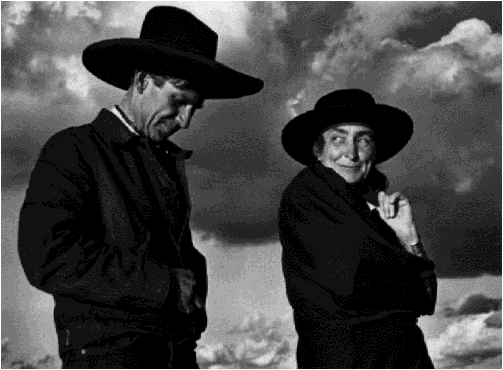
Go to the complete
reviewTwelve Old Hits from
The Pages of RALPHDo we really want to send you back to another edition of The Hits? Isn't that a bit like smelling a picture of a rose, or going into the mirror in front of the mirror which is behind the next mirror over?But then again why not? This ancient edition of hits still gets a lot of hits, and a hit on a hit-list may not be unlike your first kiss. As well, you can see what people liked to read a mere seven years ago, see how things have changed, perhaps, can see, if you've not already guessed, how you (and the rest of us) react to life's winds, how things turn, so quickly, turned about: not unlike the circles moving about our very favorite planet.

